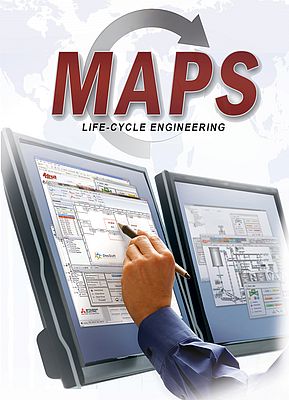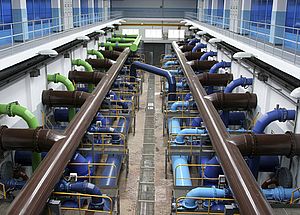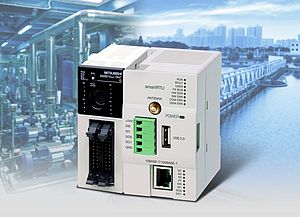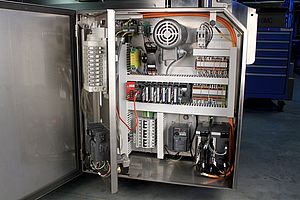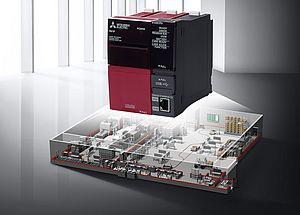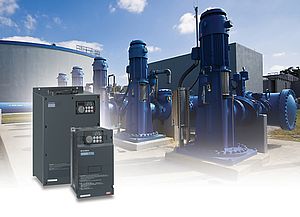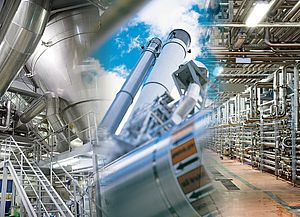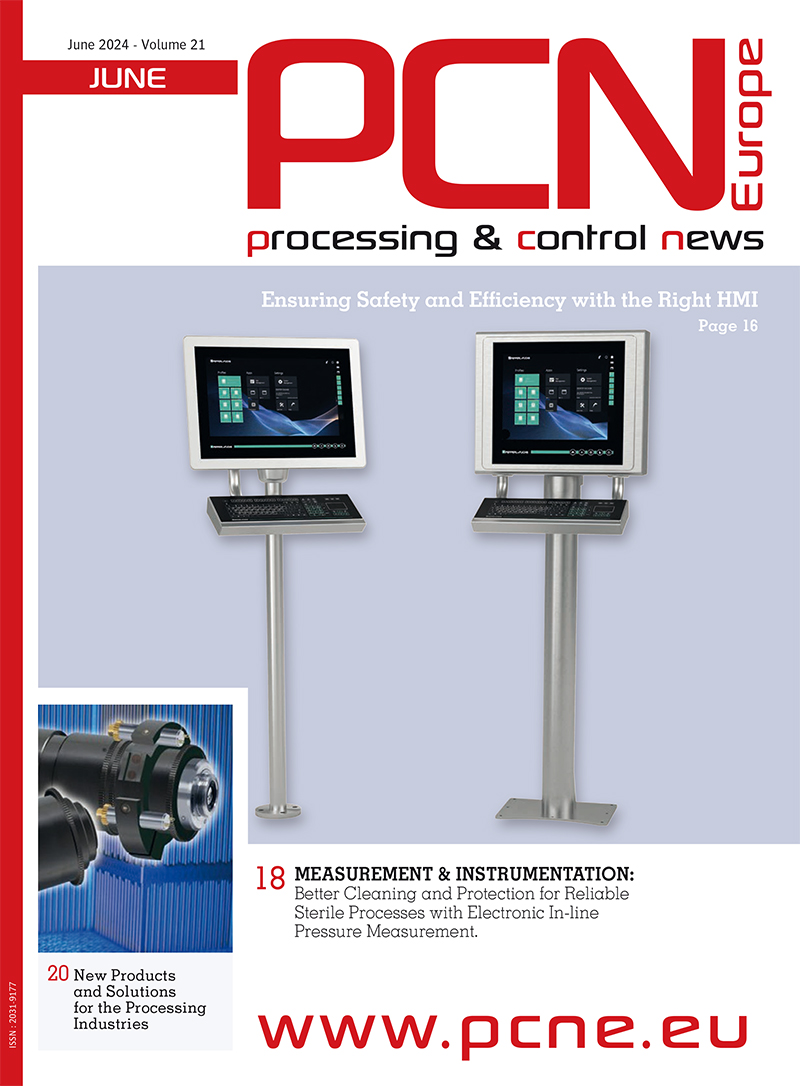The aim of the operators of a waste water treatment plant and four associated purification plants in the East of Ireland was to reduce ongoing operating costs through modernisation. The plant was brought right up-to-date by installing a life-cycle software tool and automation components.
In Ireland, the Environmental Protection Agency (EPA) keeps a close eye on businesses in order to make sure that its environmental protection requirements are strictly adhered to. The method used to do this is based on a special reporting procedure that provides information on current processes. In order to ensure that all the requirements are met, operators must be kept informed regarding ongoing processes at all times. However, both the processes – waste water treatment and purification – are highly decentralised and the previous infrastructure was not designed to allow the high-speed transfer of data. As a result, regular time-consuming visits were made to the plants on a daily basis. By means of collaboration with Mitsubishi Electric, the aim was not only to improve the efficiency of data transfer but also to reduce the energy consumption at the plants in order to save on resources and bring down costs.
Mitsubishi Electric implemented an integrated automation solution comprising the iQ control platform, various frequency inverters and GOT series HMI's. The solution was designed and visualised using the Mitsubishi Adroit Process Suite (MAPS), an integrated documentation management application with diagnostic and maintenance tools. With this, the data archived by MAPS is prepared centrally and clearly displayed to the user via the Adroit SCADA Intelligence Suite (ASI). Communication between the local pumping stations and the central plant is conducted via a GPRS network.
Frequency inverters increase energy efficiency
A high level of energy efficiency combined with maximum availability is one of the central requirements for automation components. The same applies to frequency inverters: not only do they need to provide high dynamics and speed stability but they also need to make a significant contribution towards saving energy and consequently improving plant efficiency. At the waste water treatment and purification plants in the East of Ireland given as an example, Mitsubishi Electric FR-F740 frequency inverters take care of the task of regulating the high-pressure pumps. FR-F740 offers Sensor Less Vector control (SLV), automatic motor data recognition during operation, Soft-PWM for reducing noise and additionally special processes for achieving energy savings.
MAPS brings reduced engineering costs
Engineering, commissioning and maintenance costs can be reduced considerably by installing MAPS. This involves combining three basic tasks within the construction of the plant – the programming of the PLC, the development of the process control application and the creation and updating of documentation. The MAPS library contains preassembled modules ("templates") for doing this. In the case of the water and waste water industry, the templates relate to automation objects such as pumps, valves, tanks and flow meters. The faceplate, i.e. the graphic representation, alarms, the data archiving for the object in question, tags for the process control system, as well as a list of all the digital and analogue inputs and outputs used in the program are included in a template in accordance with the processes displayed in the controller.
The result is an efficient PLC program, a process control application in which alarms, trends, data archiving and faceplates are generated along with a list of the inputs and outputs used. By means of collaboration with Adroit Technologies, customer-specific templates were created for use at the Irish waste water treatment and purification plant. After verification had been successfully completed, the full commissioning of four small to medium-sized purification plants was carried out in less than a week.
Secure remote access
Modern communication solutions, remote control concepts and flexible data management mean that the plant operators are now able to visualise the status of all the parts of the plant from a central location at any time. All the data required are archived automatically, which has meant dispensing with local data collection costs as plant values are checked remotely. In the process, Windows Security ensures that only authorised persons are able to access the system by managing users and groups. MAPS accesses these user structures and manages user rights within the application. In addition, MAPS uses the user profiles stored in Windows Security to call up and save settings within the application. If, for example, a user configures a trend with multiple curves in respect of operating time, MAPS will store the configuration in the relevant personal Windows user profile automatically.
Alarm signalling by SMS
Local GOT operator terminals from Mitsubishi Electric, which are used for the monitoring and manual control of the individual stations, bring transparency to the functional sequences and enable process-oriented dialogue between operator and plant. As all the relevant information is immediately accessible, a service engineer can display a comprehensive overview of all the system processes. Besides being easy to operate and configure, as well as having a particularly fast reaction and imaging time, the GOT control devices have powerful diagnostic functions. The reporting system ensures rapid fault detection which means that down times are reduced as a result.
Alarms are displayed immediately within the control room via the centralised alarm system. In addition, if a problem arises the system sends a text message to the members of the service team via standard mobile data terminals within a very short time so that they are able to react quickly and thus save on resources and reduce down times. The transmission of level data or the current status of pumps and sensors by SMS can also be actively requested. This non-location-dependent access makes workers more flexible and prevents the need to purchase additional hardware.
Adroit SCADA Intelligence Suite
Besides the need to archive data, all information occurring has to be presented as clearly as possible so that the operators can react quickly to a situation if necessary. In the case of the plant in Ireland, the Adroit SCADA Intelligence Suite (ASI) looks after the preparation of data. The database is searched at regular intervals for relevant information which is then put into a specific context such as a special pump, for example. Details relating to location, availability, delivery rates, energy consumption and other user-specific data will be stored for that pump. Once configured, this information will be periodically stored in the so-called data warehouse, while taking account of the relevant context, from where it can then be quickly and clearly displayed in an Excel-based report, for example, for the purpose of studying the efficiency of the pumps by comparing delivery rates and energy consumption.
It was also important for the plant operators in Ireland to be able to supply the Irish environmental authorities with information for the EPA report in a prescribed format. Whereas that information used to have to be collected manually, it is now requested and compiled automatically by the Business Intelligence System, thus saving on time.
Maximising cost efficiency
The waste water treatment and purification plants have been thoroughly modernised by applying an appropriate automation concept. The installation of frequency inverters has also enabled energy consumption to be reduced. Remote access via MAPS and the Business Intelligence System (ASI) has increased time efficiency and security – while providing remote maintenance and servicing as well as automated continuous data collection and preparation. Ultimately, these improvements have contributed towards the reduction of ongoing operating costs.



